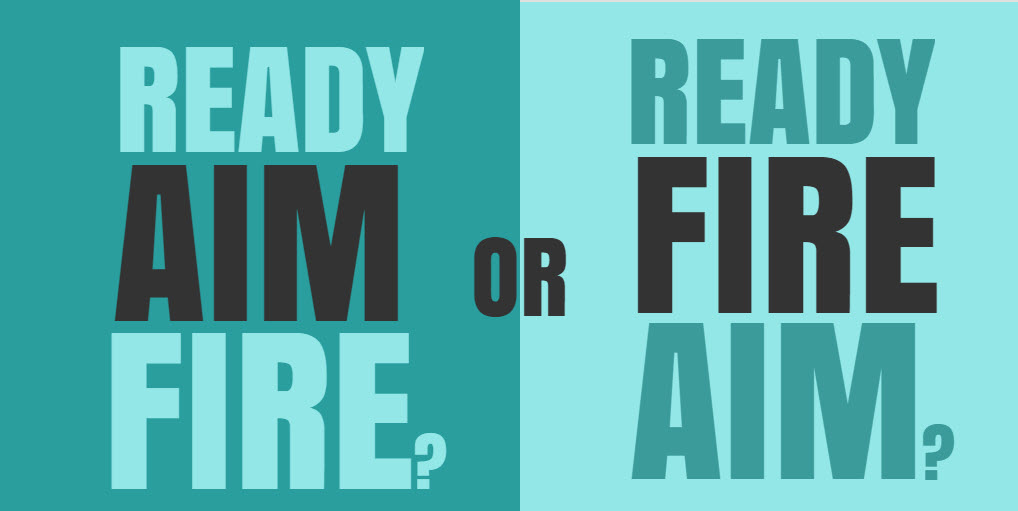When it comes to bringing a new process to market, people generally fall into one of two camps: meticulous planning, testing, re-planning, and re-testing; or getting it out there whether it’s ready or not. Knowing your strategy when it comes to implementing customer experience initiatives will help you overcome the drawbacks of the strategy to which you subscribe.
Ready. AIM. Fire. – If you fall into the ‘Ready, Aim, Fire’ category, it is likely that you carefully plan and consider all implications prior to implementation. You test the new process to death. You believe that there is worth in getting it exactly right, even to a painstaking level of detail. The drawback to this approach is that sometimes it can take longer than necessary to make a change. The benefit to this approach is that you are very careful about providing the best possible experience to your customers.
Suggestions for improvement: Decide what things you can live without, for now. You can refine the process once it is in place instead of delaying the launch. Consider the risk of NOT providing the solution to your customers sooner rather than later, and weigh that against the implications of it not being “perfect” (if there’s such a thing).
Ready. FIRE. Aim. – If you fall into the ‘Ready, Fire, Aim’ category, it is likely that you’re ready to start making things happen whether they are ready or not. You believe that you can get it right in the field and a less-than-perfect implementation is better than delaying the implementation for additional planning. The drawback to this approach is that your customers could be frustrated by a lack of planning and smooth functionality. The benefit is that you can begin getting feedback immediately and truly mold the process/product to the customers needs.
Suggestions for improvement: If you currently get a little trigger happy with new ideas, make sure you’re vetting them and spending your effort on those that resonate the most with your customers. A little extra planning might help you save time in the long run.
One method isn’t necessarily better than the other, but it may help in certain circumstances to test out the one you are not accustomed to using. You should do what your customers can tolerate. Can your customers tolerate the status quo while they wait what seems like forever for a solution? Or can your customers tolerate an imperfect solution while you work out the details after implementation?
In my experience, customers tend to tolerate imperfection when they can see that improvements are coming on a regular basis and an effort is being made to make it the best possible experience. If one method isn’t working, maybe you need to shake it up and get things out there in a new way. Make sure you have a solid feedback loop in place to listen to your customers and adapt to their response.
